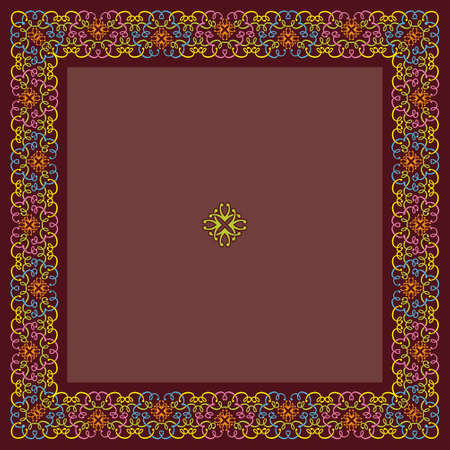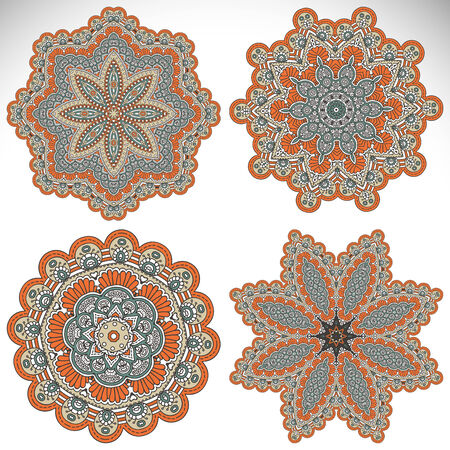Introduction: Weaving Stories Under Our Feet
In every Indian home, the gentle warmth of handcrafted carpets and durries is more than a treat for the eyes—it is a living tapestry of our heritage. These artisanal creations are not merely floor coverings; they are woven stories that whisper of centuries-old traditions, skilled craftsmanship, and the vibrant hues of our culture. From bustling metros like Delhi to serene villages in Rajasthan, these handwoven wonders form an integral layer in our daily lives, grounding us in comfort while connecting us to our roots. They serve as silent witnesses to family gatherings, festive celebrations, and quiet moments alike. In fact, for many Indians, a home without a carpet or durry is incomplete—a sentiment passed down through generations. With each knot and weave, these textiles embody not just aesthetic beauty but also the values and histories that make Indian interior decor uniquely soulful.
2. Historical Roots: Threads of Tradition
India’s legacy in handcrafted carpets and durries is woven into the very fabric of its cultural history, reflecting centuries of artistry, regional identity, and social narratives. The tradition of carpet weaving is believed to have flourished during the Mughal era, when Persian influences merged with indigenous skills, giving rise to exquisite patterns and techniques unique to the subcontinent. Meanwhile, durrie making—a more rustic form of flat-weave floor covering—has been an intrinsic part of rural Indian homes for generations, often crafted by women using age-old looms and local materials.
Regional Varieties: A Mosaic of Craftsmanship
From the snow-capped valleys of Kashmir to the sun-drenched plains of Rajasthan and the bustling handloom towns of Haryana, India boasts a diverse spectrum of handcrafted carpets and durries. Each region imparts its own distinct motifs, colours, and weaving methods, resulting in pieces that are as much about storytelling as they are about decor.
| Region | Specialty | Notable Features |
|---|---|---|
| Kashmir | Kashmiri Carpets | Intricate floral designs, silk and wool blends, Persian-inspired patterns |
| Jaipur (Rajasthan) | Jaipur Rugs | Vibrant hues, geometric patterns, natural dyes, traditional motifs like paisleys & lotus |
| Panipat (Haryana) | Panipat Durries | Durable cotton weaves, bold stripes or chevrons, functional yet decorative appeal |
The Historical Significance
These handcrafted textiles were never mere floor coverings; they served as markers of status and cultural identity. Royals commissioned custom-made carpets to adorn palaces, while humble durries added warmth and colour to village homes across the country. Today, their enduring presence not only pays homage to artisanal heritage but also celebrates India’s vast cultural diversity—an elegant blend of tradition and contemporary aesthetics that continues to shape interior décor in modern Indian homes.

3. Craftsmanship & Techniques: Legacy in Every Knot
In the heart of every Indian handcrafted carpet and durrie lies a story woven with centuries-old techniques, passed down through generations. The artistry begins with the selection of indigenous materials—pure wool from Rajasthan, silk threads from Varanasi, or sturdy cotton sourced locally. Each artisan, known as a kaarigar, brings to life intricate patterns using traditional looms like the pit loom or frame loom, both fixtures in homes and workshops across weaving clusters such as Bhadohi, Panipat, and Jaipur.
The Language of Weaves
The meticulous process starts with taana-baana (warp and weft), where yarns are set up on the loom—a ritual that demands patience and precision. Designs often reflect local heritage, seen in motifs like buti, jaali, or the famed Mughal-inspired paisley. Artisans deftly use hand-spun yarns dyed with natural pigments—indigo, madder root, or turmeric—applied through age-old methods such as bandhani (tie-dye) or ikat.
Tools of Tradition
The toolkit is humble yet profound: wooden combs (kangi) for beating knots into place; iron shears for precision cutting; and hand-carved blocks for stamping outlines on raw fabric. Every tool tells its own tale, echoing the rhythm of rural India.
A Heritage Preserved in Hands
This dedication to craft transforms simple threads into masterpieces. Each knot encapsulates not just skill but family legacy—where grandmothers teach granddaughters, and fathers pass secrets to sons. In Indian interior decor, these carpets and durries are more than floor coverings; they are living heirlooms that embody cultural pride, sustainability, and the enduring spirit of Indian design.
4. Symbolism & Cultural Identity
Handcrafted carpets and durries are more than just beautiful floor coverings in Indian homes; they are vibrant storytellers, woven with motifs, colours, and patterns that echo the spirit of India’s cultural diversity. Each piece becomes a canvas, reflecting generations of artistry and regional ethos. For instance, the peacock motif seen in many Rajasthani durries symbolises grace and renewal, while geometric patterns from Uttar Pradesh signify protection and unity. The colour palette itself is deeply symbolic—red for prosperity, yellow for sanctity, blue for tranquility. These elements don’t simply add aesthetic value; they connect families to their roots and narrate tales of festivals, rituals, and everyday life. Below is a table that highlights the significance of common motifs and colours found in Indian handcrafted carpets and durries:
Motif/Pattern |
Region |
Cultural Meaning |
|---|---|---|
| Peacock | Rajasthan | Symbolises beauty, renewal, royalty |
| Paisley (Kalka) | Kashmir | Represents fertility and abundance |
| Geometric Borders | Uttar Pradesh | Protection against evil, unity |
| Lotus Flower | Tamil Nadu | Purity, spiritual awakening |
| Tree of Life | Punjab | Eternal life, growth, connection to ancestors |
| Red Colour | Pan-India | Prosperity, celebration, energy |
| Blue Colour | Kutch (Gujarat) | Tranquility, infinity, spirituality |
| Yellow Colour | Madhya Pradesh | Sanctity, happiness, auspiciousness |
This intricate language of design ensures every carpet or durry is uniquely Indian—rooted in local traditions yet versatile enough to complement modern interiors. Through these visual narratives, handcrafted textiles serve as cultural ambassadors in interior décor, keeping ancestral wisdom alive amidst contemporary living spaces.
5. Role in Modern Indian Interior Decor
Handcrafted carpets and durries are not just relics of the past; they have found a vibrant new identity within modern Indian interior decor. Today’s urban homes, whether in bustling Mumbai or serene Kochi, seamlessly blend these artisanal pieces with both traditional and contemporary design elements. The unique textures, intricate patterns, and lively colours of handcrafted floor coverings add an unmistakable warmth to spaces, making them inviting and personal.
Indian homeowners often pair a bold geometric durrie with minimalist Scandinavian furniture or lay a regal Kashmiri carpet beneath a sleek glass table. This fusion creates a playful dialogue between heritage and modernity—each piece narrates stories of Indian craftsmanship while catering to present-day sensibilities. The layering of carpets over cool marble floors softens interiors, balances acoustics, and visually anchors living areas.
Moreover, these handwoven marvels evoke nostalgia—reminding many of ancestral homes or festive gatherings where such textiles were central to family life. In metros like Delhi and Bengaluru, young professionals and families alike cherish this connection, as it keeps their roots alive amidst ever-evolving trends. Whether used as statement pieces or subtle accents, handcrafted carpets and durries infuse vibrancy, tradition, and a sense of belonging into modern Indian homes.
6. Sustainability & Community Impact
When we speak of the cultural significance of handcrafted carpets and durries in Indian interior décor, it is impossible to overlook their profound impact on sustainability and rural communities. Supporting these traditional crafts is not merely a style statement—it is an act of social responsibility that resonates deeply with India’s ethos of “Vasudhaiva Kutumbakam” (the world is one family).
Empowering Rural Artisans
The making of handwoven carpets and durries has been the backbone of many rural livelihoods across states like Rajasthan, Uttar Pradesh, and Andhra Pradesh. By choosing handcrafted pieces over machine-made alternatives, urban homeowners directly support artisan families, often sustaining entire villages. Each purchase helps artisans continue their craft, ensuring the survival of generational skills and stories interwoven into every thread.
Eco-Friendly Practices Rooted in Tradition
Handcrafted carpets and durries are typically made using natural fibres such as cotton, wool, or jute, dyed with vegetable or low-impact colours. The weaving process itself relies on age-old techniques that require minimal energy consumption, making these products inherently sustainable. In a world awakening to eco-conscious living, these Indian home accents offer a beautiful blend of tradition and environmental responsibility.
Preserving Indigenous Crafts for Tomorrow
With globalisation and rapid industrialisation threatening indigenous arts, every handcrafted carpet or durry you bring into your space becomes a silent protest against cultural erosion. It celebrates local motifs—like the intricate jaali patterns of Jaipur or the bold geometric lines from Mirzapur—ensuring that India’s rich design vocabulary continues to thrive in contemporary settings. More than décor, these pieces are legacies that keep our heritage alive and relevant for future generations.
7. Conclusion: Preserving Our Loomed Heritage
Handcrafted carpets and durries are more than just decorative accents in Indian homes; they are vibrant storytellers, weaving together the nation’s cultural threads. These handwoven treasures nurture a unique sense of identity, comfort, and aesthetic grace that no machine-made counterpart can replicate. As we walk barefoot across their intricate patterns or gather for chai on their soft surfaces, we experience a tactile connection to our roots—one that celebrates the artistry and devotion of skilled Indian artisans. In every warp and weft lies a chapter of heritage, echoing the diversity and vibrancy of Bharat itself. Embracing these handcrafted masterpieces within our interiors is not only about style—it is a conscious choice to honour tradition, encourage sustainable livelihoods, and keep the loomed legacy alive for future generations. Let us continue to cherish, preserve, and showcase these artistic marvels, ensuring that the soul of Indian interior décor remains deeply woven with the spirit of our timeless craft.


